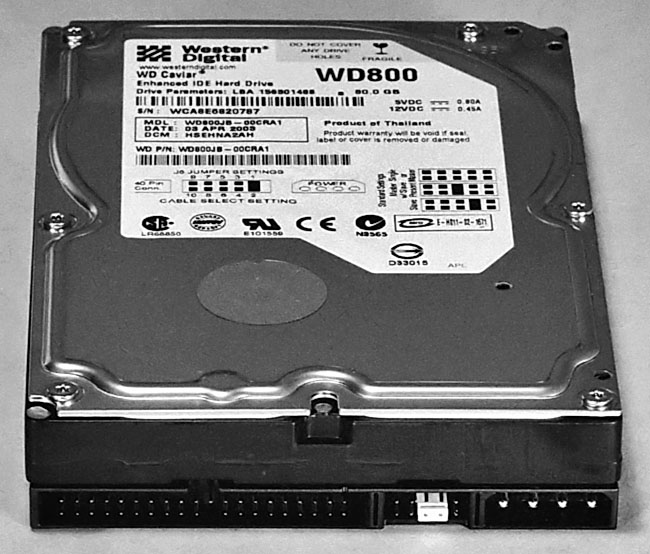 |
|
 |
How to Build Your Own PC - Save A Buck And Learn A Lot 9 Chapter 2: Component Overview |
|
Hard Disk Drive
The hard drive is like long-term human memory. Whatever’s saved on the hard drive will remain after the computer is turned off.
The main factor in selecting a hard drive is its size, which is measured in gigabytes. Today, you’ll probably want at least a 40 GB drive. For this build, an 80 GB Western Digital hard drive was purchased from Best Buy for $60. It is shown in Figure 20.
A hard drive has platters which spin around (think of how a CD works). The faster the platter spins, the faster the hard drive can find, read, and write information. The speed of a hard drive is usually measured in RPM or revolutions per minute.
|
The drive purchased for the build spins at 7,200 RPM, which means the platter spins around 7,200 times every minute. That’s considered a good speed. If you’re doing something that requires fast access from the hard drive, such as playing videos, you’ll want the fastest drive you can afford.
The final hard drive performance factor you’ll want to examine is the buffer size, which is usually measured in Megabytes (MB), with 2 MB to 4 MB being common. This western digital drive has an 8 MB buffer.
Buffers are like waiting areas where information can be accessed more quickly than if the information must be read from the hard drive.
The drives you’ll use are referred to as IDE drives. Another type of drive, SCSI hard drives, are also available. A new builder should stick with IDE drives.
Some people suggest purchasing the largest drive you can afford because you’ll fill it up, especially if you download many webpages, photos, videos, or songs. However, if you don’t intensively download from the Internet, a more modest-sized drive will probably work great.
|
Home - Table Of Contents - Contact Us
How to Build Your Own PC (/byop/) on PCGuide.com
Version 1.0 - Version Date: May 4, 2005
Adapted with permission from a work created by Charlie Palmer.
PCGuide.com Version © Copyright 2005 Charles M. Kozierok. All Rights Reserved.
Not responsible for any loss resulting from the use of this site.





